Shortwave Broadcasting in the 21st Century:
Radio Taiwan International
Esther Tseng / photos courtesy of RTI / tr. by Brandon Yen
March 2025

Giving voice to Taiwan in 20 languages, the Central Broadcasting System—under its call sign Radio Taiwan International—broadcasts to some 150 countries. In a tumultuous world, RTI continues to offer companionship and encouragement to listeners, helping them through life’s slings and arrows.
Earlier this year, Japanese radio listener Hitoshi Katou and his partner came to Taiwan to celebrate the Lunar New Year. This was his 12th visit to the country, and they visited Radio Taiwan International.
Taiwanese hospitality
Katou lives in Hokkaido. When he was young, he worked on an offshore island where Internet connection was poor, but where he had access to shortwave radio. It was then that he began to listen to the Central Broadcasting System’s Japanese shows. Listeners like Katou, who have formed intimate ties with Taiwan thanks to RTI, are featured in a new book that explores the national broadcaster’s changing roles from the wartorn years of the 20th century to our transition to democracy.
Cheryl Lai, former president and current chairperson of RTI, says that few broadcasters are as devoted as RTI to interacting with listeners across the globe. Compared with more populous wealthy countries, Taiwan’s government budget for international broadcasting is very small, but it has successfully supported the work of this vibrant radio service, whose listeners hail from 147 different countries.
Lai tells us that the BBC used to gauge the size of their audience by a rule of thumb that estimated that there were 500 listeners for each letter received. This is why RTI presenters cherish every letter and reception report they receive: it reminds them that their programs are reaching a large audience.
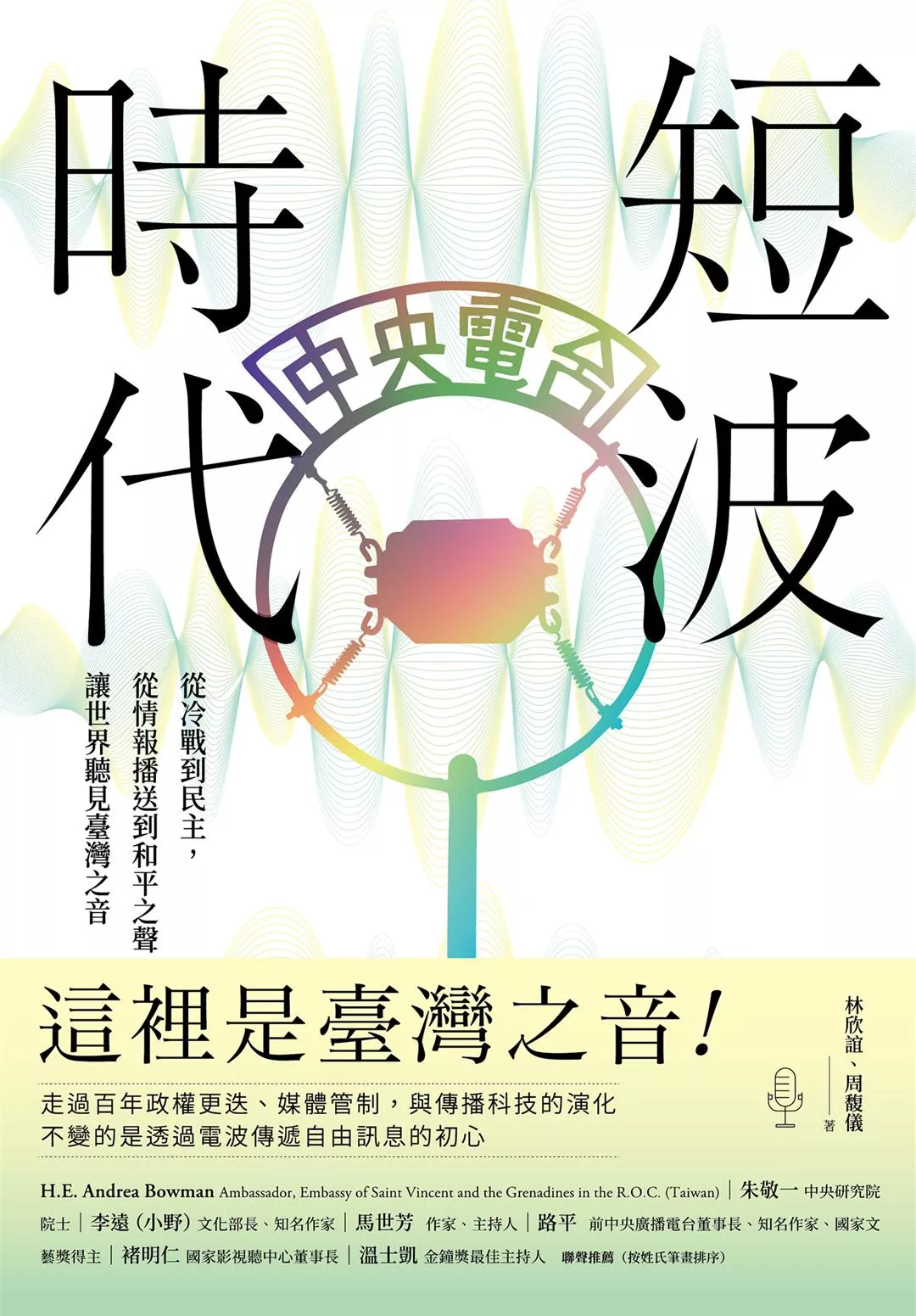
RTI has published a book exploring how the broadcaster came to convey the voice of Taiwan to the wider world.
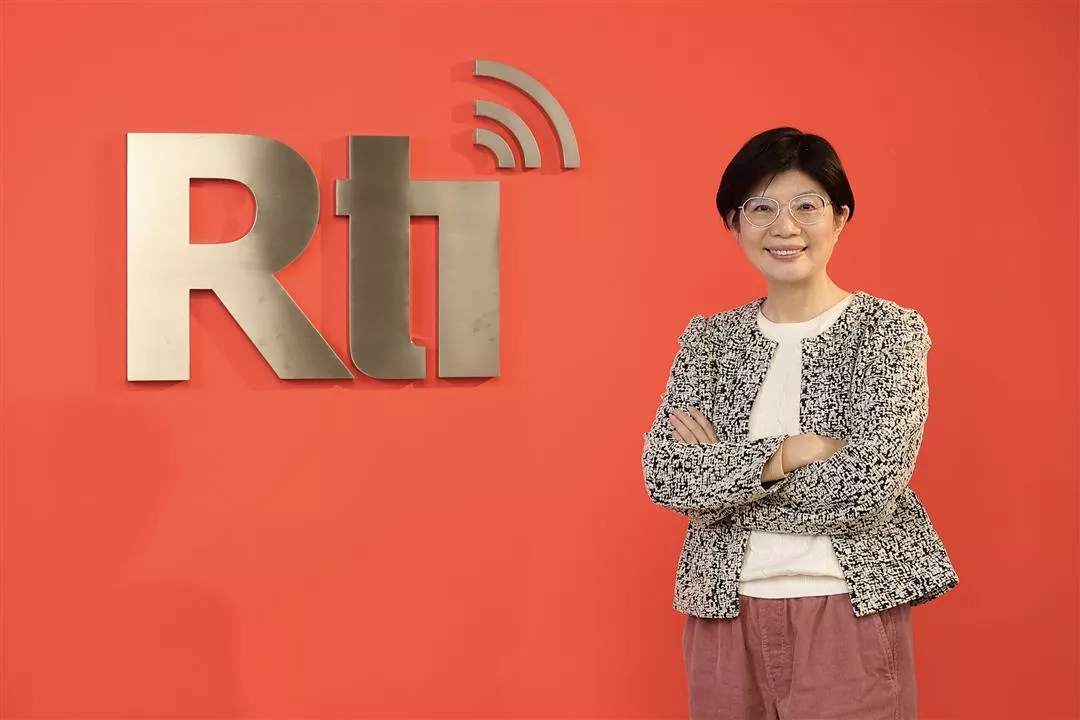
Cheryl Lai, chairperson of RTI, says that RTI presenters cherish every letter they receive from their audience and place a high premium on interactions with listeners. This distinctively Taiwanese hospitality makes RTI stand out from other international broadcasters. (photo by Jimmy Lin)
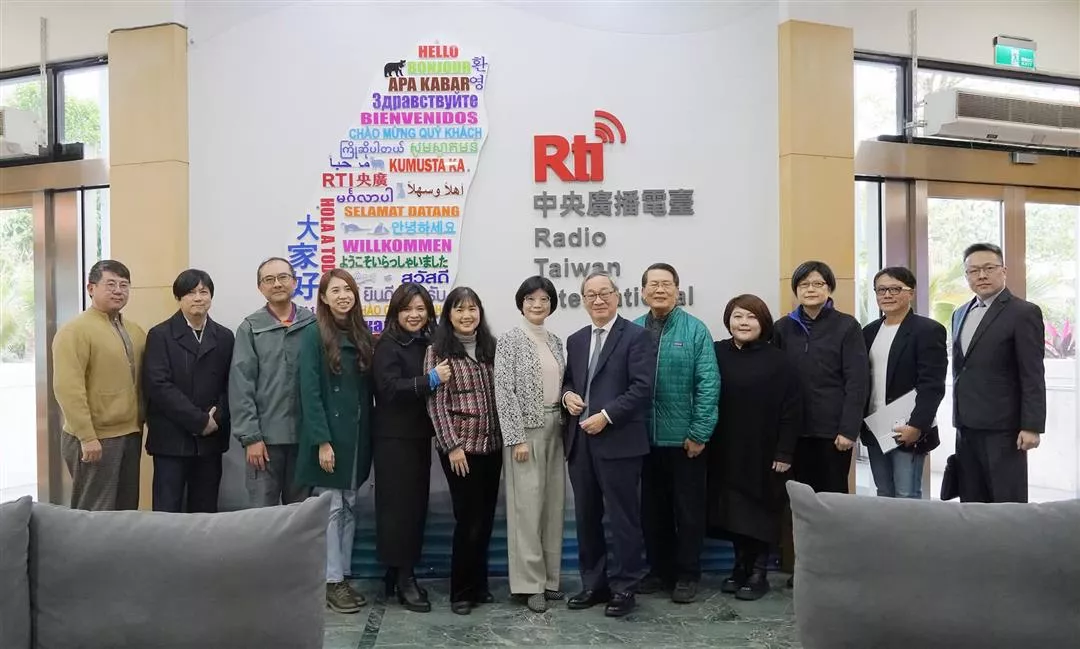
After a meeting of RTI’s boards of directors and supervisors in 2025, Minister of Culture Li Yuan (sixth from right) joins them for an informal gathering.

Crossing national borders
To the west, RTI’s shortwave broadcasts can reach as far as the French island of Réunion in the Indian Ocean, east of Madagascar. The broadcaster’s Spanish-language presenter Andrea Wang tells us that her listeners include a Spanish family of five who visited RTI when they came to Taiwan. The youngest daughter chose to attend university here and has been invited to take part in RTI’s Spanish offerings.
Wang Shu Ching, who has been hosting Japanese-language shows for 46 years, says that RTI listeners in Osaka formed a club called Gyokusann Kai on their own initiative. For the last four decades, the members have been holding meetings year after year. Even during the Covid-19 pandemic, as many as 12 meetings took place online—surely a very rare phenomenon in the world of broadcasting.
German-language presenter Chiu Bihui’s programs are intended for shortwave listeners in Germany, Switzerland, and Austria. There are listener clubs in Berlin and Ottenau. Chen says that German-language listeners tend to be insightful and rational. Some of them have traveled to Taiwan and have taken the opportunity to visit RTI. Veritable Taiwan buffs, they can chat with you about Taiwan easily for a couple of hours. Despite their serious air, German-speaking listeners are in fact full of warmth and enthusiasm.

RTI has a collection of shortwave radio receivers and transmitters from different eras. (photo by Jimmy Lin)

Listeners of all ages attended the launch of RTI’s new book.
Inspiring global listeners
Inspired by RTI, Japanese listeners Takashi Kitami and Mitsuo Yamada have researched Taiwan’s radio culture and know a great deal about the island’s pirate radio stations in the 20th century. Kitami has even published two books exploring the history of broadcasting in the ROC (Taiwan).
Because there are many shortwave listening clubs in South Asia, Carlson Huang, manager of RTI’s International Languages Division, has made a special effort to organize RTI gatherings there. Places at the events in Bangladesh and Pakistan were snapped up quickly, with 150 people signing up in Bangladesh within just three days. However, due to interference by China, South-Asian meetings are usually held in India these days.
Indonesian listener Rudy Hartono, who has been an admirer of RTI for half a century, tunes in to RTI shows from a palm orchard in Kalimantan, the Indonesian part of Borneo. He shares his reception reports directly on his own Facebook page, and has published My Radio My Life, which tells stories of his engagement with international shortwave radio stations such as RTI and NHK.

Japanese-language presenter Wang Shu Ching has been hosting shows for 46 years. She has a following of loyal listeners, who think of her voice as the voice of Taiwan. (photo by Jimmy Lin)

German-language presenter Chiu Bihui has launched live shows on digital media platforms, appealing to German-speaking audiences across the world. (photo by Jimmy Lin)

RTI sends Taiwanese-themed QSL cards to listeners. Shortwave enthusiasts enjoy collecting these cards. (photo by Jimmy Lin)
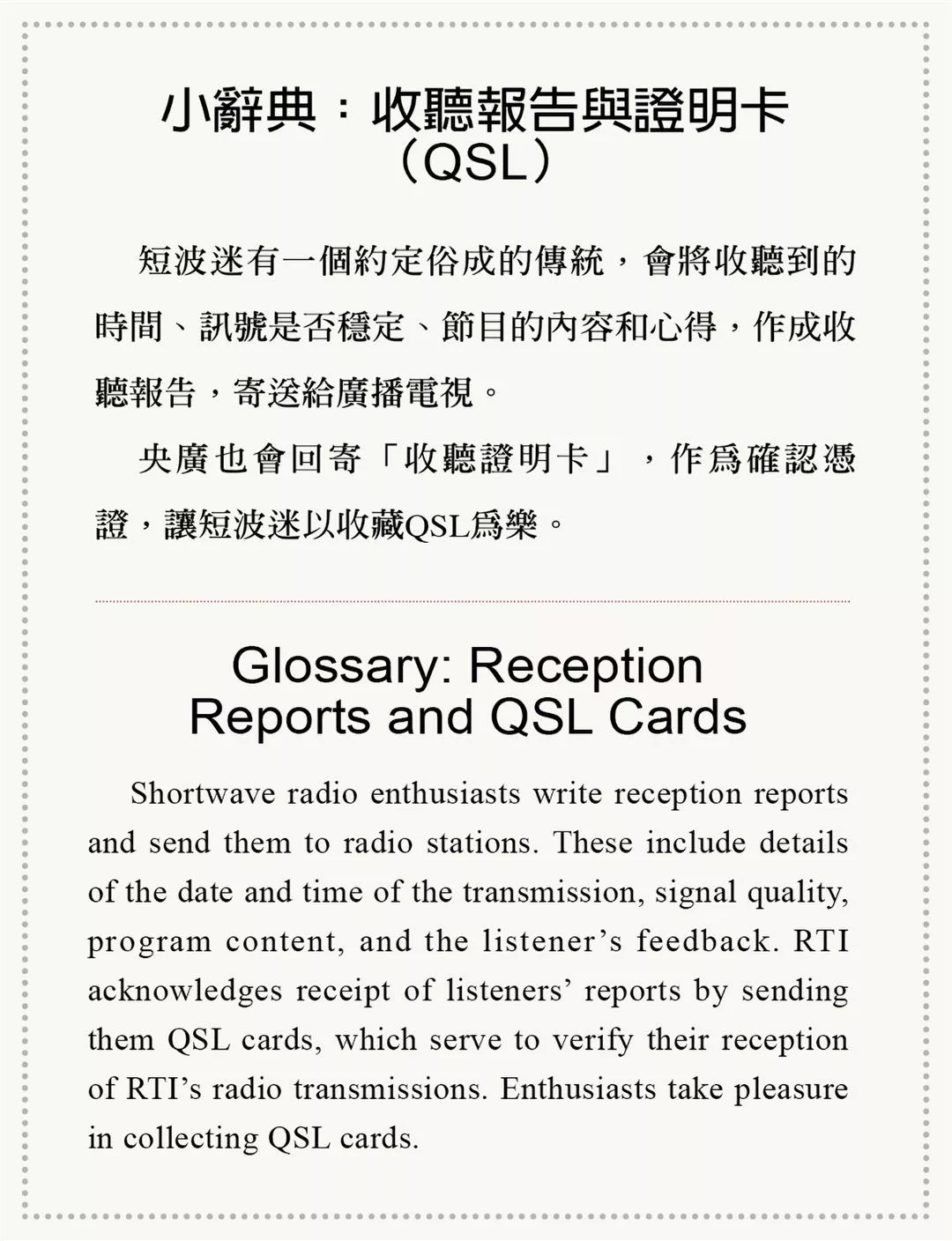
The power of shortwave
In addition to FM and AM transmissions, RTI uses shortwave to project voices from Taiwan to the wider world. The power of shortwave permeates national borders and knows no bounds.
Student activists on Tiananmen Square in 1989 listened to the Central Broadcasting System’s live reports on their protests.
In the wake of the Tōhoku Earthquake on March 11, 2011, a listener in the hard-hit city of Osaki in Japan’s Miyagi Prefecture obtained news via RTI’s Japanese programs and made a plea for help through RTI.
During the Third Taiwan Strait Crisis in 1996, China conducted a series of missile tests, and then in 1999 the Jiji Earthquake devastated parts of Taiwan. Both these events caused alarm among Southeast-Asian workers in Taiwan. Many had relatives who suggested that they pack up and leave Taiwan as soon as possible. In these difficult situations, Thai-language presenter Asoke Srichantr provided Thai workers in Taiwan with accurate, up-to-date information and useful guidance, giving them peace of mind.

300-kilowatt shortwave transmitters are 30 times more powerful than ordinary FM radio transmitters. This photo shows RTI’s antennas in Tamsui, New Taipei City.
Broadcasting for peace
The BBC brought back its shortwave service for Ukraine and Russia after the Russian invasion of Ukraine in 2022. RTI has also received cri de coeur appeals from Ukrainian listeners. In response to the theme for World Radio Day (February 13) in 2023—“Radio and Peace”—RTI launched its Ukrainian-language service.
The Russia–Ukraine War has also prompted RTI to increase its Russian-language broadcasts by one hour every day, not only conveying Taiwan’s support for Ukraine, but helping listeners in countries like Ukraine, Belarus, and Lithuania to understand the differences between Taiwan and China.
RTI is a member of the Association for International Broadcasting, through which it builds contacts with international broadcasters in democratic countries, such as the BBC, NHK World-Japan, Deutsche Welle, and Voice of America.
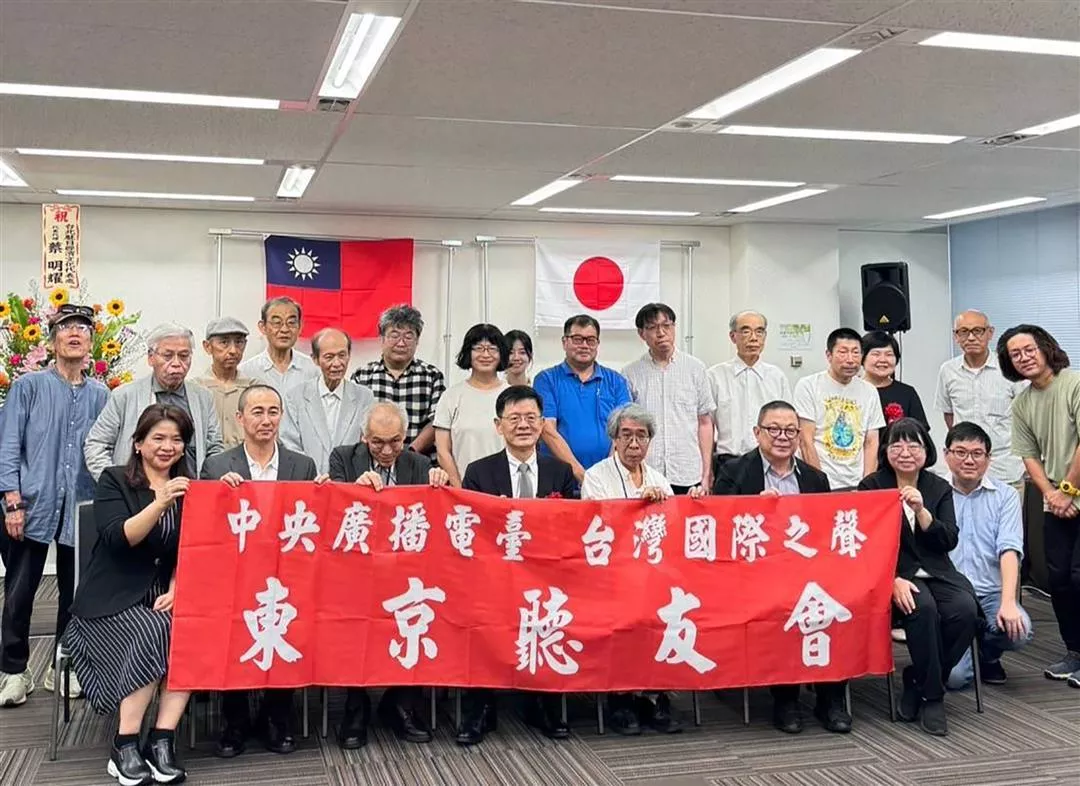
RTI listeners connect with each other by forming clubs. This photo shows a gathering of the listener club in Tokyo.

An event celebrating the 30th anniversary of RTI’s resumption of its Russian-language broadcasts.
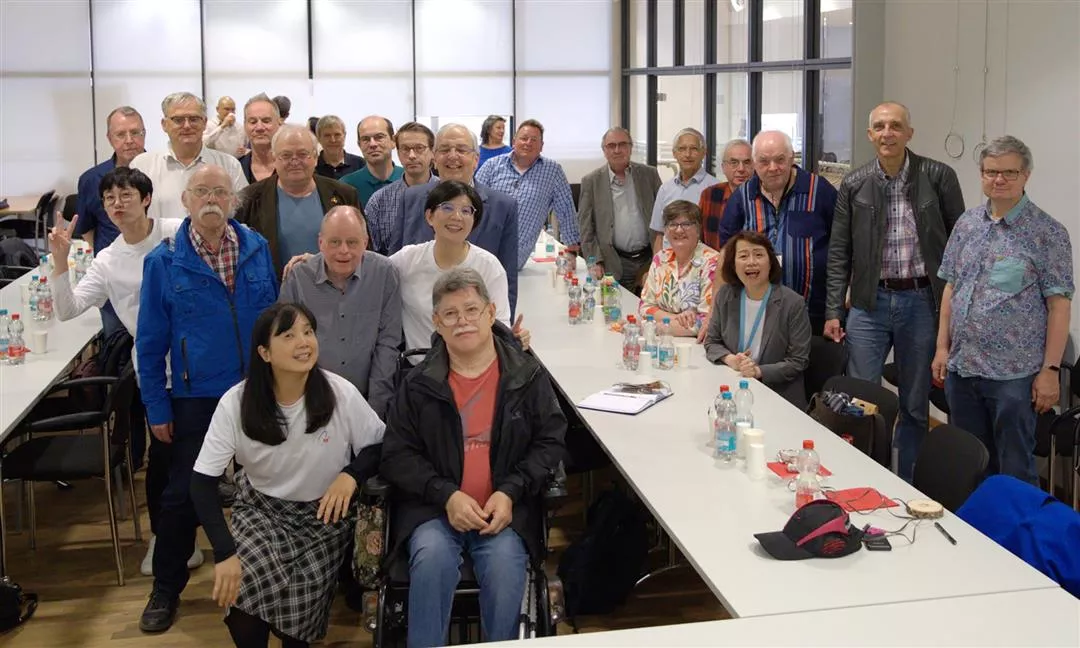
A gathering of RTI’s listener club in Berlin.
Speaking to immigrants
Since the 1950s, the Central Broadcasting System (today’s RTI) has been offering programs in Indonesian, Thai, and Vietnamese for audiences in Southeast Asia.
In the 1990s, Taiwan opened its doors to migrant workers from Southeast Asia. In addition to continuing to broadcast to Southeast Asia, CBS began to offer AM and FM shows in Indonesian, Thai, and Vietnamese for Southeast-Asian migrant workers and long-term immigrants in Taiwan. These programs supply reliable, authoritative news in their listeners’ native languages, giving them a warm sense of companionship in a country far away from their birthplaces.
The presenters of RTI’s Southeast-Asian programs have also produced live shows to provide more listening options for different audiences. The content evolves with the times. For example, RTI collaborated with the National Immigration Agency in October 2024 to launch a new radio program (on FM104.9) and podcast called “The Power of New Immigrants,” helping immigrant listeners navigate their lives in Taiwan.
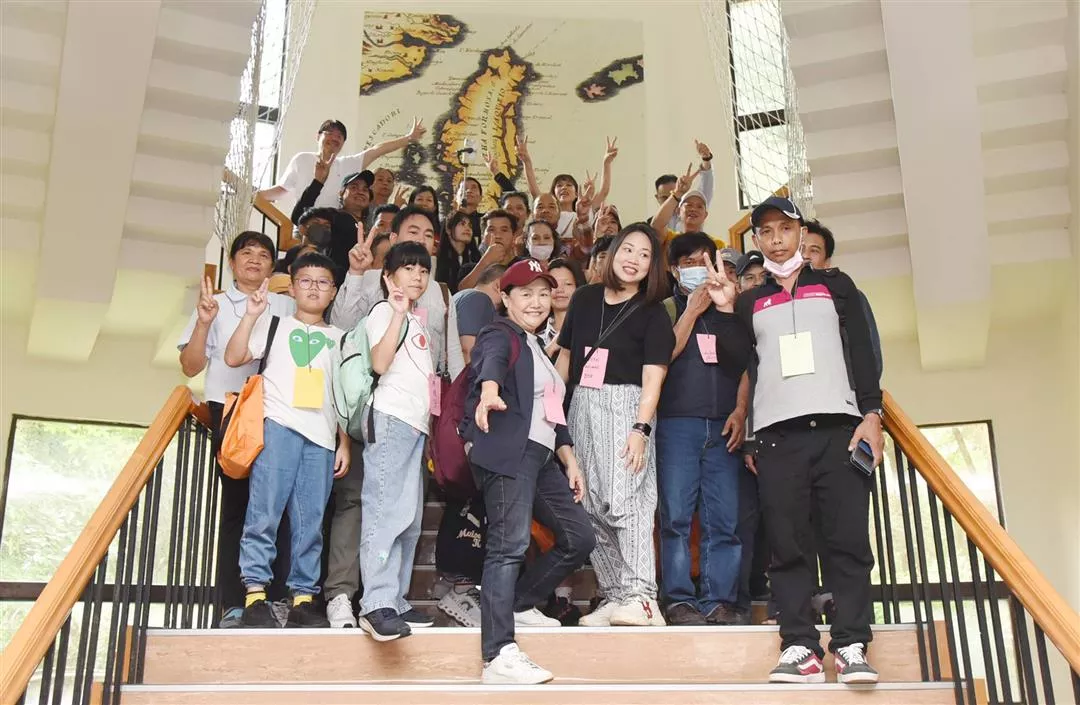
Listeners to RTI’s Thai-language shows have forged intimate connections with Taiwan.
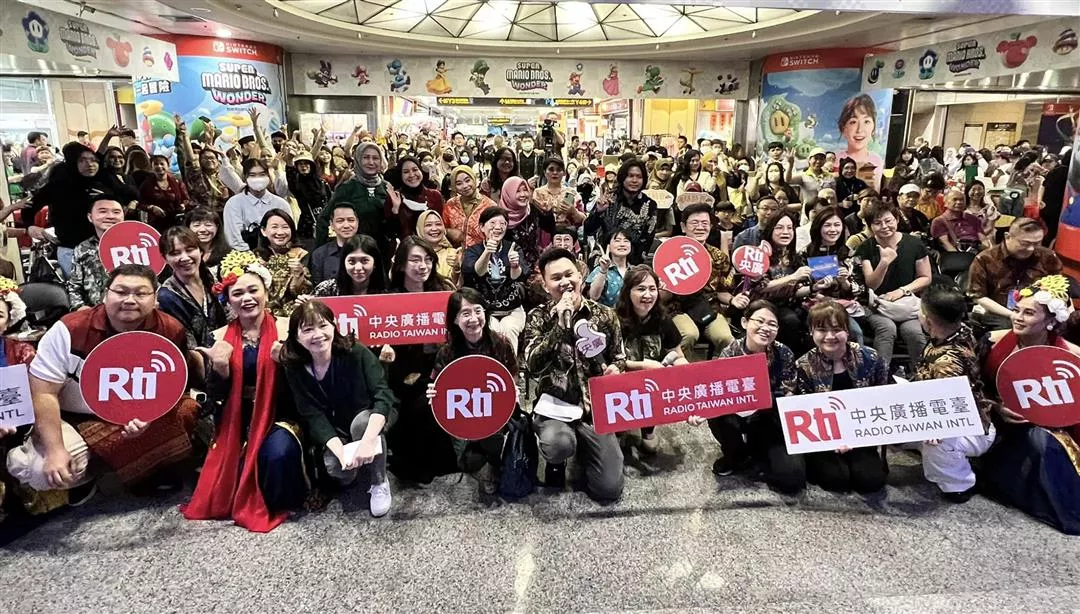
RTI’s Indonesian listeners are very enthusiastic. Their gatherings are full of mirth.
Connecting with listeners
RTI’s shortwave transmissions often underscore the importance of Taiwan’s geographical location. Cheryl Lai says that RTI’s shortwave broadcasts can easily reach authoritarian countries such as North Korea, China, Russia, and Myanmar, where there is a lack of transparent political information. Seawater is a good medium for shortwave broadcasting as radio waves are reflected between the sea’s surface and the ionosphere. Even people on international cargo ships or on fishing vessels plying distant seas across Oceania have access to shortwave broadcasts.
Lai tells us that numerous North Korean defectors have visited RTI, where they are welcomed by the Korean-language presenters. Chang Jui-chang, president of RTI, recalls receiving a reception report from a Korean American living in New York State who had listened to a show originally aimed for the Korean Peninsula. Perhaps thanks to propitious weather conditions, the shortwave signal that day had “spilled over,” traveling across the North Pole to reach America, and the listener had happened to turn on the radio at exactly the right time.
RTI reaches out to its listeners through social media and video sharing platforms such as YouTube. Lai says that RTI is now crafting new Mandarin and English-language shows to suit the podcast format, with a view to attracting younger audiences. At the same time, RTI continues to offer shortwave broadcasts, catering to more senior listeners and shortwave radio enthusiasts.
Visit RTI’s website to listen to a wealth of fascinating programs. Or turn on your shortwave radio, pull out the aerial, and twist the tuning knob, and you’ll be greeted by that welcoming phrase “This is Radio Taiwan International” or its equivalent in a dazzling array of languages. Thanks to RTI, voices from Taiwan continue to ripple across the world, speaking to the hearts of listeners both here and abroad.


By broadcasting to nearly 150 countries across the world, RTI plays a vital role in cultural diplomacy, enabling listeners to connect with Taiwan. (photo by Jimmy Lin)
@List.jpg?w=522&h=410&mode=crop&format=webp&quality=80)




@List.jpg?w=522&h=410&mode=crop&format=webp&quality=80)
@List.jpg?w=522&h=410&mode=crop&format=webp&quality=80)
